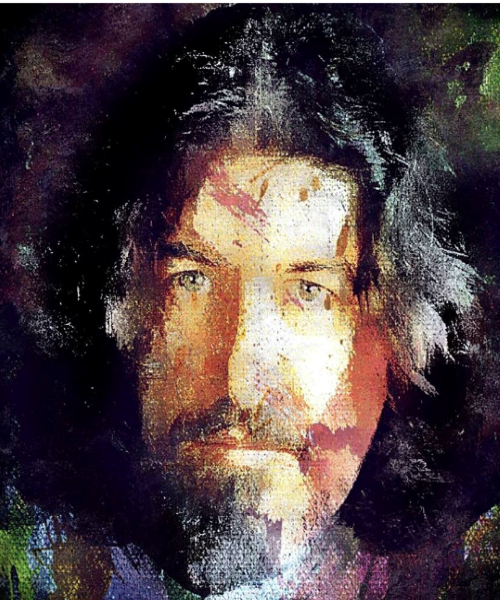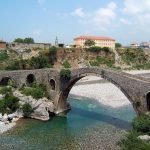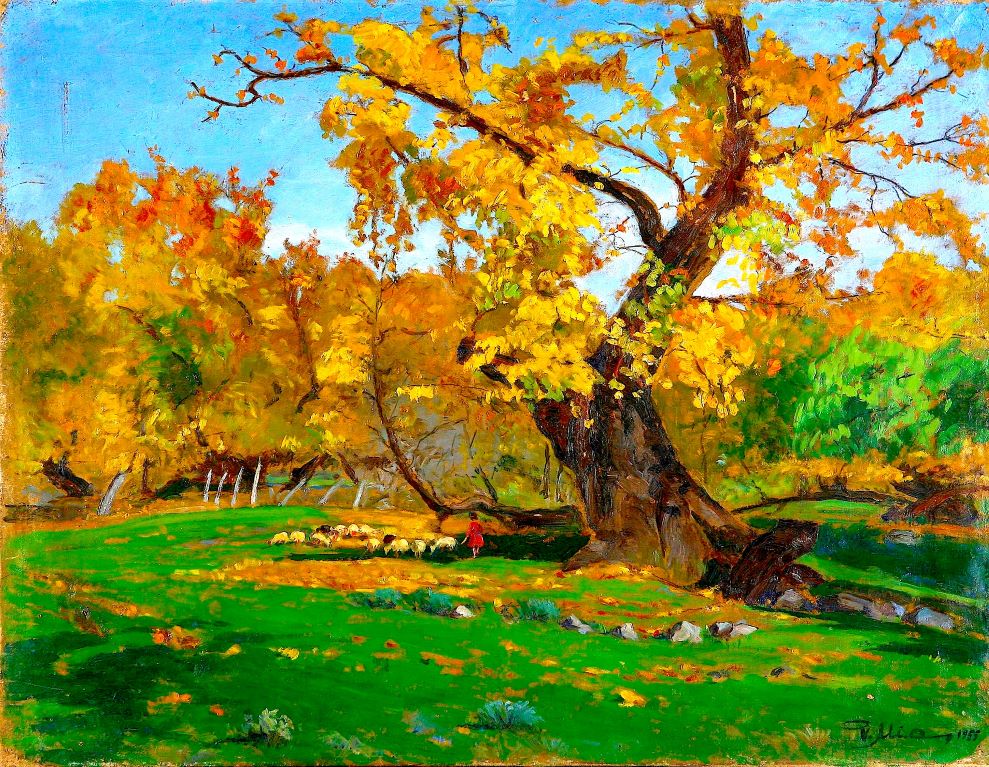
Albanian Painters: Names of Top Historic Painters You Ought to Know
Works of Albanian painters are often overlooked by critics though many of them deserve special credit. In their work throughout history, Albanian painters have challenged decades of oppression and censorship to deliver the best artworks to their audiences; below are some short bios of Albania’s most resilient and remarkable painters-ranked in no particular order.
1. Kolë Idromeno (1860-1939)
Kolë Idromeno is the most famous of modern Albanian painters. He was born in Shkodër, the cultural capital of the country, where since youth drew and did watercolors. In 1875 he attended, though for only six months, the Academy of Fine Arts in Venice. After dropping from the Academy, he remained in Venice and worked as the assistant to an experienced Venetian painter.
In 1883, Idromeno, being himself also a photographer, opened a photo studio with cameras imported from the Pathe company in France. As early as 1912, he imported moving picture equipment to show films, becoming the first in Albania to do so. In that same year, Idromeno established an agreement with the Austrian company Josef Stauber to build Albania’s first, rudimentary public cinema.
Some of Idromeno’s best works are “Dasma Shkodrane” (“Wedding in Shkodra”), “Shkrepi i Ulqinit” (“Rock of Ulqin”), “Portret Fshatari” (“Portrait of a Peasant”), “Portreti i Cinës” (“Portet of Cina”), “Plaku i Postribës” (“The Old Man of Postriba”), and “Vetë portreti” (“Self-portrait”). Urban and traditional elements have an important place in Idromeno’s work. Religious subjects are also the theme of some other paintings. Kolë Idromeno was a versatile, talented, and energetic artist, engaging in the full spectrum of figurative arts including photography, sculpture, and even architecture.
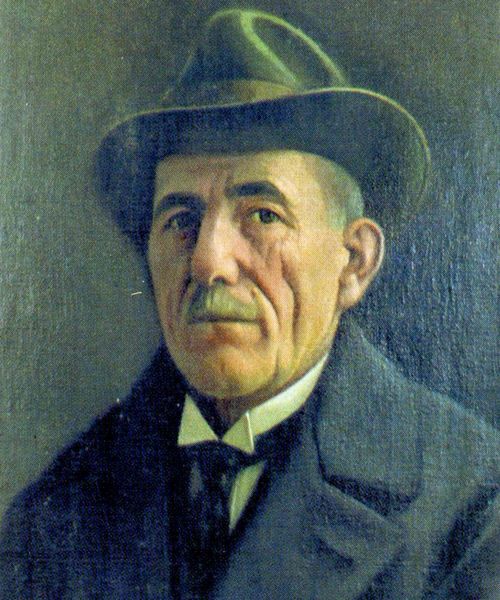
2. Onufri (1500 ?-1578 ?)
Onufri is Albania’s most famous Medieval painter, author of many icons and frescoes in churches currently spread across Albania, North Macedonia, and Greece. There is a reasonable assumption that he was from the town of Elbasan in central Albania. In this town, his icons adorned the churches of Shelcan and Valshi/Shpat. Apart from Elbasan, he was active in Berat as well as Kostur (Greece), then home of an Albanian majority, as well as Slepçë and Ohrid in current North Macedonia.
Some of Onufri’s most renowned icons include “Shën Maria me Jezusin” (“Saint Mary with Jesus”), “Gjon Pagëzori” (“John the Baptists”), and “Prezantimi i Jezusit në Tempull (“Presentation of Jesus at the Temple”). Of the murals/frescoes, we can note the “Deisis” of the iconostasis in the “Assumption of St. Mary” church in Berat, and the thirty-one frescoes of the “Church of Apostles” in Kostur. In them, the painter has used creative techniques such as painting on wood as well as dazzling colours. His red and gold colour stand out creating a mystic feel and revealing an immense level of craftsmanship. The radiant red colour, especially, is Onufri’s “signature move”, still a secret as to its composition.
Another important characteristic of Onufri’s work is his inclusion of real, contemporary life scenes. For these motives, the author drew inspiration from real people and pastoral scenes across Central Albania. As such, he was the first Albanian Medieval painter to include ethnographic elements in his works. Onufri’s work is important in a wider context as well: it presents figures of Christian Saints in a cheerful stance, a rare posture in the period following the fall of Constantinople.
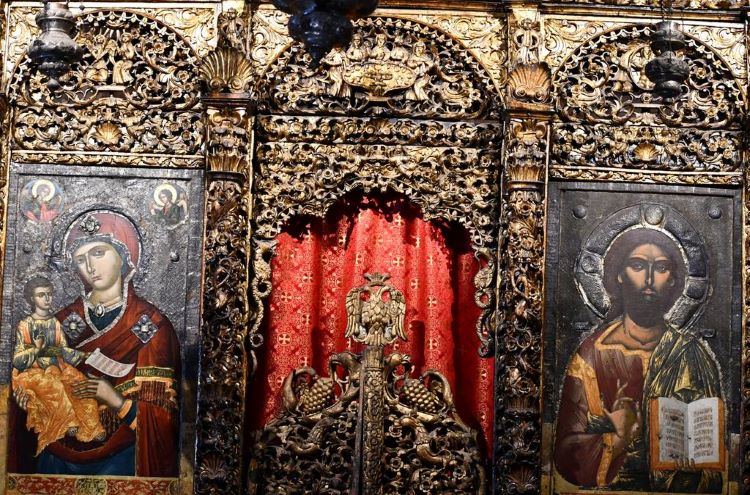
3. Sadik Kaceli (1914-2000)
Sadik Kaceli was born in Tirana as a member of a large family from the Dajti region. He remains one of the most original Albanian painters. From 1929, Kaceli attended the American Vocational School, where he mastered drawing. Additionally, he acquired valuable knowledge of international art by frequenting the first public library, the New Herbert Library. Through postal correspondence, the famous French painter Henri Matisse (1869-1954) recommended to him in 1936 that he continue his studies in the Ecole Nationale Supérieure des Beaux-Arts in Paris. Accordingly, in 1936-1941, Kaceli continued in Paris his art training.
After returning from Paris to Tirana, Kaceli found an oppressive regime censoring all areas including art. Unable to adapt to the forced demands of the time, he kept a low profile by teaching at a secondary school and then, from 1946 until his retirement in 1973, teaching at the Jordan Misja Academy. Numerous portrait and landscape paintings were the product of Kaceli’s work. Although his depictions are considered realist, they are not of social realism, the main art dogma of the time. Recently, the marginalized works of Kaceli have come to the attention of art lovers and received sincere appreciation.
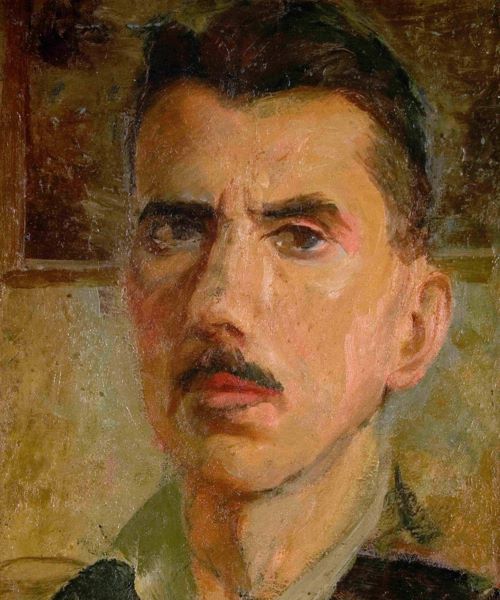
4. David Selenica (late XVII – XVIII century)
Selenica was born in the late XVII century likely in the village of Selenica near Vlorë. His life is mostly known from his works. Critics consider David Selenica as Albania’s most prominent post-Byzantine icon painter.
In 1715, David Selenica painted the frescoes of one of the chapels of the Great Lavra monastery, the first monastery built in mount Athos. In 1721, Selenica began painting the frescoes and icons of the Shën Kolli (Saint Nicholas) church in Voskopoja. He continued to work there for five years, an effort resulting in a true masterpiece. The elegant paintings of the basilica form an Albanian version of the Sistine Chapel.
In 1727, Selenica painted the frescoes and murals of the church of the Blessed Virgin Mary in Thessaloniki and the church of Saint John the Baptists in Kastoria.
Selenica’s work inspired his contemporaries and later generations as late as the beginning of the XIX century. He is considered the founder of a school of painters based in Korçë.
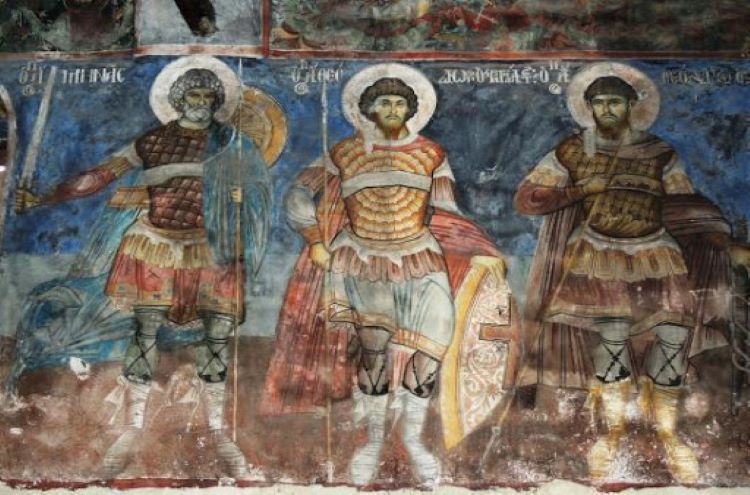
5. Ibrahim Kodra (1918-2006)
If an Albanian painter would have to be called “Picasso” that would no doubt be Ibrahim Kodra. He was born in the small town of Ishëm in Central Albania. In 1938, he received a scholarship from the Albanian royal court granting education in the Academy of Fine Arts. When in Italy, Kodra moved from Rome to Milan to attend the Academy of Fine Arts of Brera (“Accademia di Belle Arti di Brera”). It was here where his talent shined and his name as a unique painter became popular. At rapid pace and astonishing success, Ibrahim Kodra exhibits in Milan, Venetia, Belgrade, Paris, New York, and other major worldwide artistic hubs. Kodra’s unique cubism fused with inspiration from the Albanian folklore resonated deeply with international audiences. Thanks to this success, he became part of an elite group of painters that included Picasso, Marc Chagall, Henry Matisse, Lucio Fontana, and Renato Guttuso.
In his long career, Kodra completed about 6,000 thousand works, each a masterpiece on its own. For many, he remains one the most completed, talented, and successful of all Albanian painters; a painter of worldwide stature.
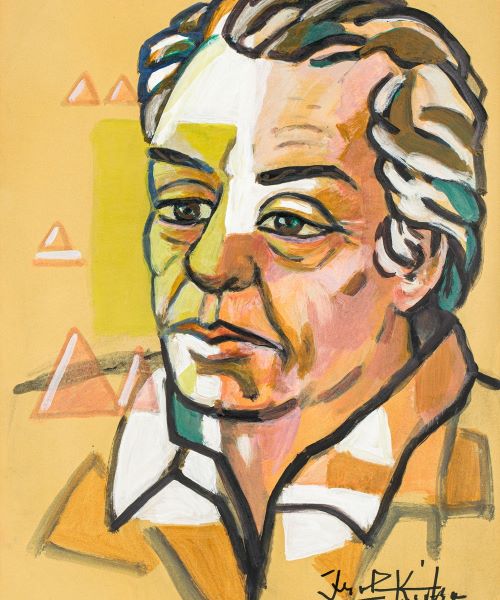
6. Maks Velo (1935-2020)
Maks Velo was born in Paris in 1935. He completed his education in the engineering faculty of Tirana during the dictatorship. Up to 1973, Velo designed architectural projects for residential buildings, schools, parks, and cinemas across Tirana. However, that same year, began a persecution against his figure and his work from the regime. In 1978, the authorities arrested Maks Velo and sentenced him to 10 years in prison. On court decision, the same authorities confiscated more than two hundred of his figurative works and his entire book collection.
Maks Velo spent a decade in the notorious Spaç prison forced into hard work and poor conditions. Artistically, it forced him to do the most with the least available instruments possible. A pencil and paper would have been a luxury in those times; a simple sketch on constant guard would have been a masterpiece. The notion of doing more with less gained weight in Velo’s work even later as he regained his liberty in democratic Albania. Velo was a multi-dimensional artist, active as a poet, writer, publicist, art critic, and so on. He has held more than forty personal exhibitions across Albania, France, Poland, the USA, and so on.
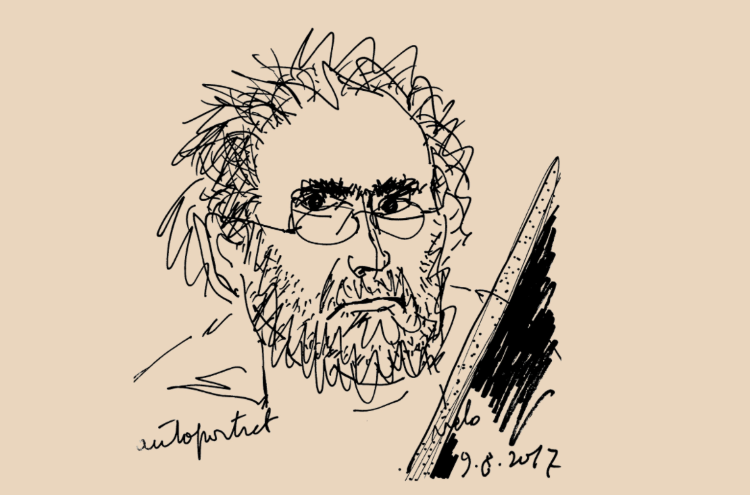
7. Vangjush Mio (1891-1957)
Vangjush Mio was born in Korça and, in 1908, moved with his brother to Bucharest, Romania. There, between 1915-1919 he studied at the National School of Fine Arts. Upon completing his academic training, Mio held a personal exhibition in Korça, likely the first such exhibition ever held in Albania.
During 1920-1924, Mio studied at the Academy of Fine Arts in Rome. He used his time there also to travel across Italy and admire the works of contemporary Italian realists and impressionists. After returning to Korça, he founded a fine arts society and exhibited his paintings on various occasions.
More than four hundred paintings of Vangjush Mio are currently preserved, mainly in the galleries of Tirana and Korça. Mio’s house in Korça serves as a museum for his figure, the Vangjush Mio Museum, by displaying many of his works.
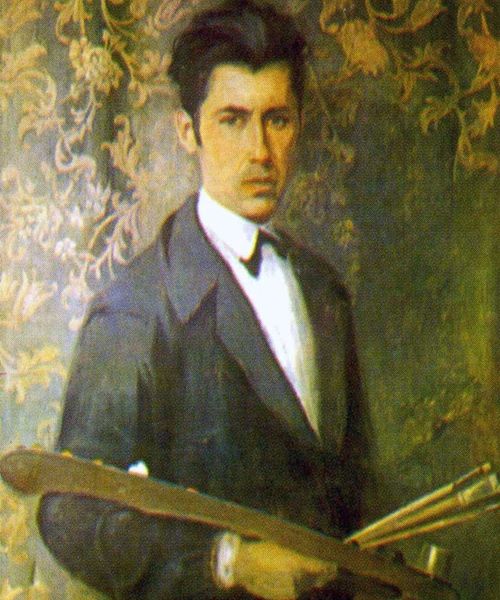
8. Zef Kolombi (1907-1949)
Zef Kolombi was born in Sarajevo as the son of a woman from Slovenia and a man from Shkodra. From a young age, he was raised by his paternal grandmother in Shkodra. After a struggling youth, in 1929 he achieved a state scholarship to study at the Academy of Fine Arts in Rome. In 1933, he returned to Albania and taught art at the Normal School in Elbasan. He spent the remaining years of his life, until 1941, in Shkodra. From Kolombi’s paintings and drawings, about fifty are currently preserved. Among them are nudes, landscape paintings, and portraits. The earliest of them is dated in 1926. A common characteristic often noted in Kolombi’s work is a sense of melancholy fused in his colors.
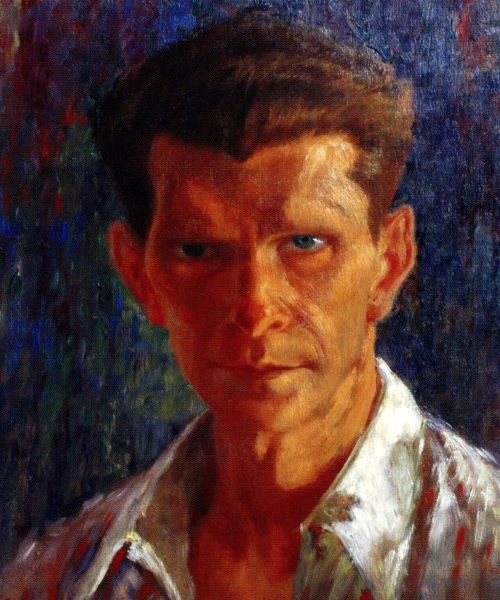
9. Spiro Xega (1876-1953)
Spiro Xega is one of the early painters of Albanian classical art. He is best known for his iconic equestrian painting of Scanderbeg in 1931, Albania’s all-time hero. Xega was born in Opar, part of the Korça region in southeast Albania. He learned the art of painting in Turkey, though the training was not didactic. On his return to Albania, he joined the guerilla band of the charismatic Çerçiz Topulli. This experience may have later, in 1930, inspired him in his work “Banda e Shahin Matrakut” (“Warrior Band of Shahin Matraku”). Xega’s paintings, especially his “Scanderbeg”, are pure examples of talent and passion overcoming formal education.
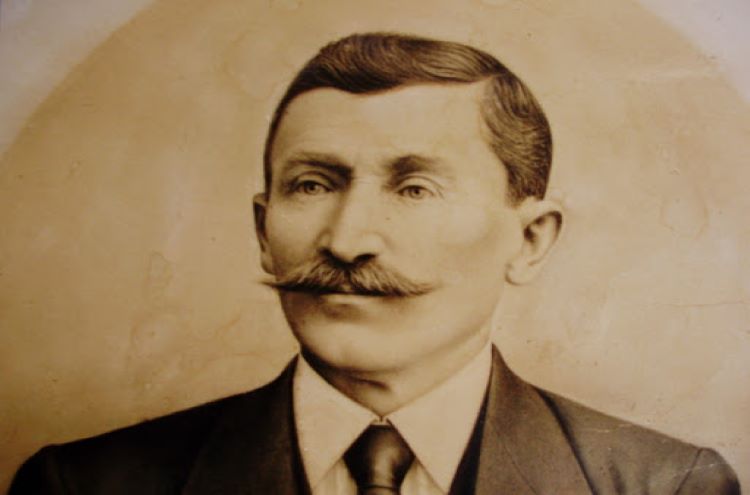
10. Helidon Haliti (1968)
Helidon Haliti is among the most talented contemporary Albanian painters and artists. His works have been exhibited in many European countries, especially in Greece where he has migrated and resides. The theme of immigration is part of his several works such as “Këmbët” (“The Feet”), “Pëllumbi” (“The Dove”), “Eva dhe Adami” (“Adam and Eve”), and “Kafazi” (“The Cage”).
Haliti works employing different techniques and evoking different genres. He makes use of powerful, vibrant colors to transmit an emotional warmth, aesthetic beauty, and finesse. Almost all of Haliti’s paintings are distinctly lyrical, tackling essential, poetic themes and avoiding unnecessary abstractions and complexities. It’s for this rare but fine simplicity that his paintings have grabbed the attention and gained the favor of heterogeneous audiences.
